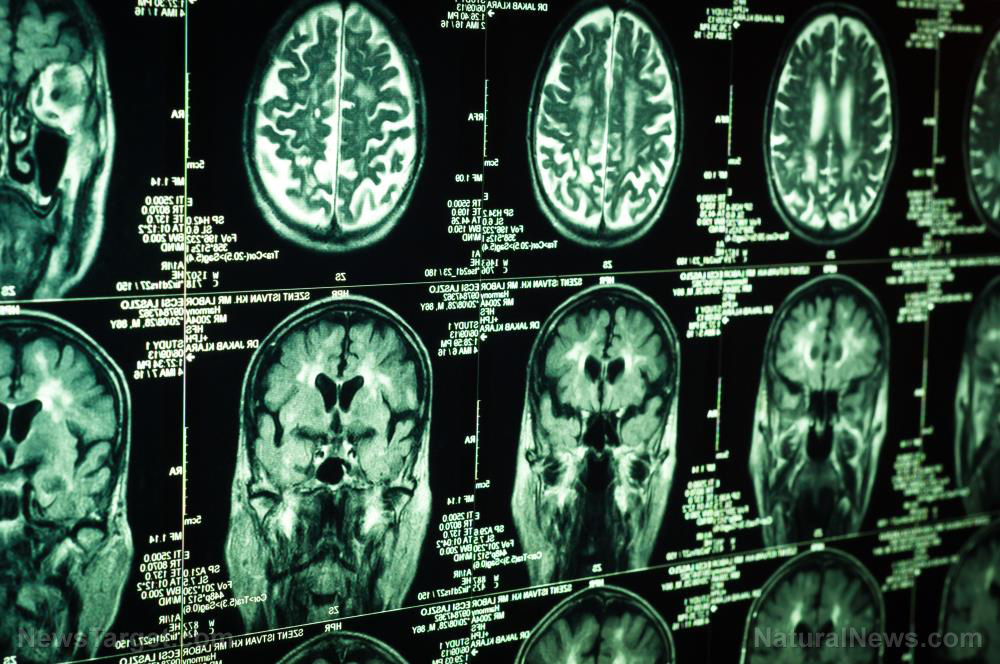The brain adapts: Boy’s brain rewired itself to compensate when a huge piece was removed
08/22/2019 / By Ralph Flores

It’s too bad that people can’t regrow limbs like the axolotl. The rare amphibian, which can only be found in the canals of Mexico City, is the focus of studies on human limb regeneration on account of its being able to regrow any body part that it loses almost perfectly.
Humans still have a long way to go when it comes to regeneration, but that doesn’t mean we’re falling behind when it comes to amazing biological feats – like that of Tanner Collins. Tanner, a seventh-grade student from Pittsburgh, looks and acts like many kids his age. He likes playing chess and building with Legos. There is something, however, that sets him apart from other 12-year-olds: More than 15 percent of his brain is gone.
Taking a gamble
It wasn’t always chess pieces and interlocking bricks for Tanner. When he was five years old, a benign tumor started growing in the back of his head. This caused him to have a series of disruptive seizures and migraines. The episodes went on for two years. At times, it was so severe that it kept Tanner from going to school. Medications didn’t help either, doing little to relieve his symptoms and making him drowsy. By the time his parents, Nicole and Carl, decided to have the tumor excised, Tanner suffered from daily seizures and was getting progressively worse – at times, collapsing and even vomiting.
Neurologists told Tanner’s parents that while the surgery could stop the seizures, it wasn’t without risks. The procedure could affect his ability to see and process visual information. His parents still agreed to let him go through the operation anyway.

“His neurologist wasn’t able to control his seizures no matter what medication she put him on,” Nicole explained in an article in OneZero. “At that point, we were desperate… His quality of life was such that the benefits outweighed the risks.”
Just before his seventh birthday, surgeons cracked open Tanner’s skull and took out his right occipital lobe and half of his temporal lobe. The occipital lobe is where the brain processes rapid visual information transmitted by the eyes (i.e., seeing). The temporal lobe, on the other hand, is where sounds are processed. These regions of the brain also house the optic nerves, which allow a person to see and are important for recognizing faces and objects. After the surgery, Tanner’s parents knew that he might not recognize them or grow up like other kids – he could even go blind.
Then, the unexpected happened: Save for the loss of peripheral vision in his left eye, Tanner turned out just fine. (Related: Neuroscientists study neuroplasticity in tadpoles to learn how autism develops.)
Neuroplasticity at work
What happened to Tanner is thanks to is something brain scientists call neuroplasticity — the ability of brain cells to change. In an article in Frontiers in Psychology, University of Washington professor Joyce Shaffer noted that neuroplasticity can occur at any age across a person’s lifespan and can have a negative or a positive influence. The word may sound like jargon, but a lot of the things people learn to do – like riding a bike or speaking a new language – are largely due to neuroplasticity. In Tanner’s case, neuroplasticity led to something remarkable: It allowed the left side of his brain to take over most of the responsibilities of the now missing right side.
Researchers are now studying Tanner’s case to understand how exactly neuroplasticity takes place. For instance, can what’s left of his brain completely take over all the functions of the parts that were removed? Can scientists provide an explanation behind this mechanism, all the way down to the cellular level? These are the questions that Marlene Behrmann, a cognitive neuroscientist at Carnegie Mellon University, is looking to answer. As she has studied Tanner’s brain for well over five years, she said that people’s understanding of how the brain works after this kind of surgery is very shallow.
“I think of this as kind of the tip of the iceberg,” she added.
Her findings, which were recently published in Cell Reports, were just as astonishing: Tanner’s neurological function is “absolutely normal” – which isn’t bad for a kid with a sixth of his brain missing.
Take that, axolotl.
Brain.news has you covered on other stories about the amazing human brain.
Sources include:
Submit a correction >>
Tagged Under:
brain function, brain health, brain surgery, brain tumor, cancer, cognitive function, cognitive health, cool science, future science, human brain, migraines, natural cures, natural medicine, nerve regeneration, nerves, nervous system, neurological function, neuroplasticity, neuroscience, occipital lobe, optic nerves, research, seizures, Tanner Collins, TCM, temporal lobe, tumor, vision
This article may contain statements that reflect the opinion of the author





















